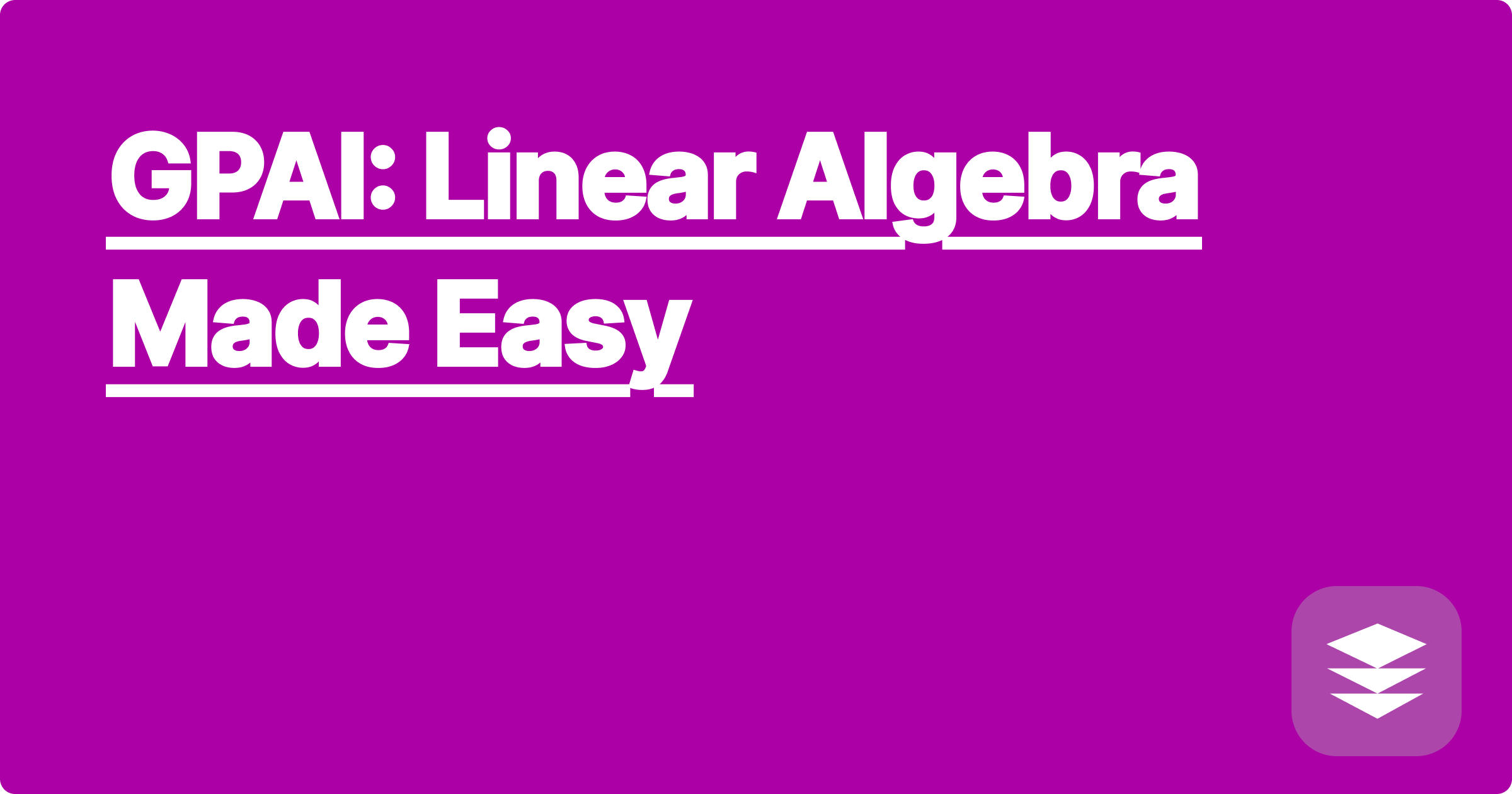
STEM fields often present complex challenges, demanding significant time and effort from students and researchers. Linear algebra, a foundational subject in many STEM disciplines, is no exception. Its abstract concepts and intricate calculations can be daunting. Fortunately, the rise of artificial intelligence offers powerful tools to simplify these challenges and enhance learning. AI can provide step-by-step solutions, clarify complex concepts, and offer valuable insights, ultimately empowering STEM learners to conquer these hurdles and excel in their studies.
For STEM students and researchers, mastering linear algebra is crucial for success. From computer science and engineering to physics and economics, linear algebra underpins numerous critical applications. Understanding vector spaces, matrices, and linear transformations is essential for tackling real-world problems. AI-powered tools can bridge the gap between theoretical knowledge and practical application, providing a personalized learning experience that caters to individual needs and learning styles. These tools empower students to grasp complex concepts more effectively and researchers to accelerate their work.
Linear algebra introduces abstract concepts that can be difficult to visualize and apply. Students often struggle with matrix operations, solving systems of linear equations, and understanding the geometric interpretations of various transformations. The sheer volume of calculations involved can be overwhelming, leading to errors and frustration. Furthermore, traditional learning resources might not always provide the personalized support and interactive experience needed for effective comprehension. This gap between the complexity of the subject matter and the available learning resources creates a significant challenge for many STEM learners.
AI tools like ChatGPT, Claude, and Wolfram Alpha offer a novel approach to learning and applying linear algebra. These platforms can provide step-by-step solutions to complex problems, explain underlying concepts in clear language, and even generate practice problems tailored to specific learning objectives. They can act as interactive tutors, providing immediate feedback and guidance, allowing students to learn at their own pace and focus on areas where they need the most support. Researchers can leverage these tools to automate tedious calculations, explore different solution approaches, and gain deeper insights into complex datasets.
To leverage AI for linear algebra problem-solving, start by clearly defining the problem. For example, if you're tasked with solving a system of linear equations, input the equations into the AI tool. Specify the desired output, such as the solution set or the reduced row echelon form of the augmented matrix. Most AI tools allow you to specify the solution method, offering flexibility and control over the learning process. After receiving the solution, carefully review the steps provided by the AI. This is a crucial step for understanding the underlying logic and reinforcing the concepts. Don't hesitate to ask clarifying questions to the AI if any step is unclear. Experiment with different problem variations and explore alternative solution methods to deepen your understanding.
Consider the system of equations: 2x + y = 5 and x - y = 1. Inputting these equations into Wolfram Alpha yields the solution x = 2 and y = 1. The platform also provides the solution steps, including the elimination method or matrix inversion. As another example, if you need to find the eigenvalues and eigenvectors of a matrix, input the matrix into an AI tool like ChatGPT. The AI will not only provide the eigenvalues and eigenvectors but also explain the process of calculating the characteristic polynomial and solving the corresponding eigenvector equations. In robotics, linear algebra is used to represent transformations and rotations. AI tools can assist in calculating the transformation matrices needed for robotic arm manipulation or object recognition.
To maximize the benefits of AI in STEM education and research, focus on understanding the underlying concepts rather than simply obtaining answers. Actively engage with the AI tools by asking questions and exploring different solution approaches. Use AI to generate practice problems and test your understanding. Combine AI-powered learning with traditional resources like textbooks and lectures for a comprehensive learning experience. Remember that AI tools are meant to augment, not replace, human understanding and critical thinking. Develop strong problem-solving skills and a deep understanding of fundamental concepts to succeed in STEM fields.
In conclusion, AI has the potential to revolutionize how we learn and apply linear algebra. By providing personalized support, interactive learning experiences, and powerful computational capabilities, AI tools empower STEM students and researchers to overcome challenges and achieve their full potential. Embrace these tools, explore their capabilities, and integrate them into your learning and research workflow to unlock new levels of understanding and efficiency. Start experimenting with these tools today and discover the transformative power of AI in linear algebra. Don't hesitate to explore different platforms and find the one that best suits your learning style and research needs. The future of STEM learning is here, and it's powered by AI.
GPAI: Solve Physics Problems Fast
Ace Chem Exams with GPAI's Cheatsheet
GPAI: Your Calculus Homework Hero
Conquer Finals: GPAI Study Guide
GPAI: Engineering Lab Data Ace
GPAI: Master Organic Chemistry
GPAI: Your Biology Exam Secret